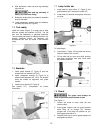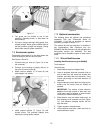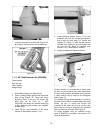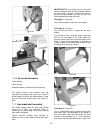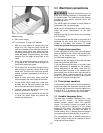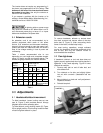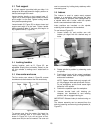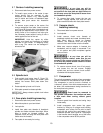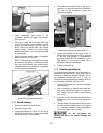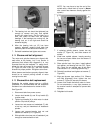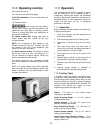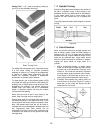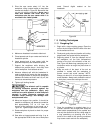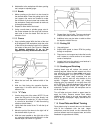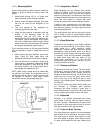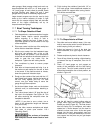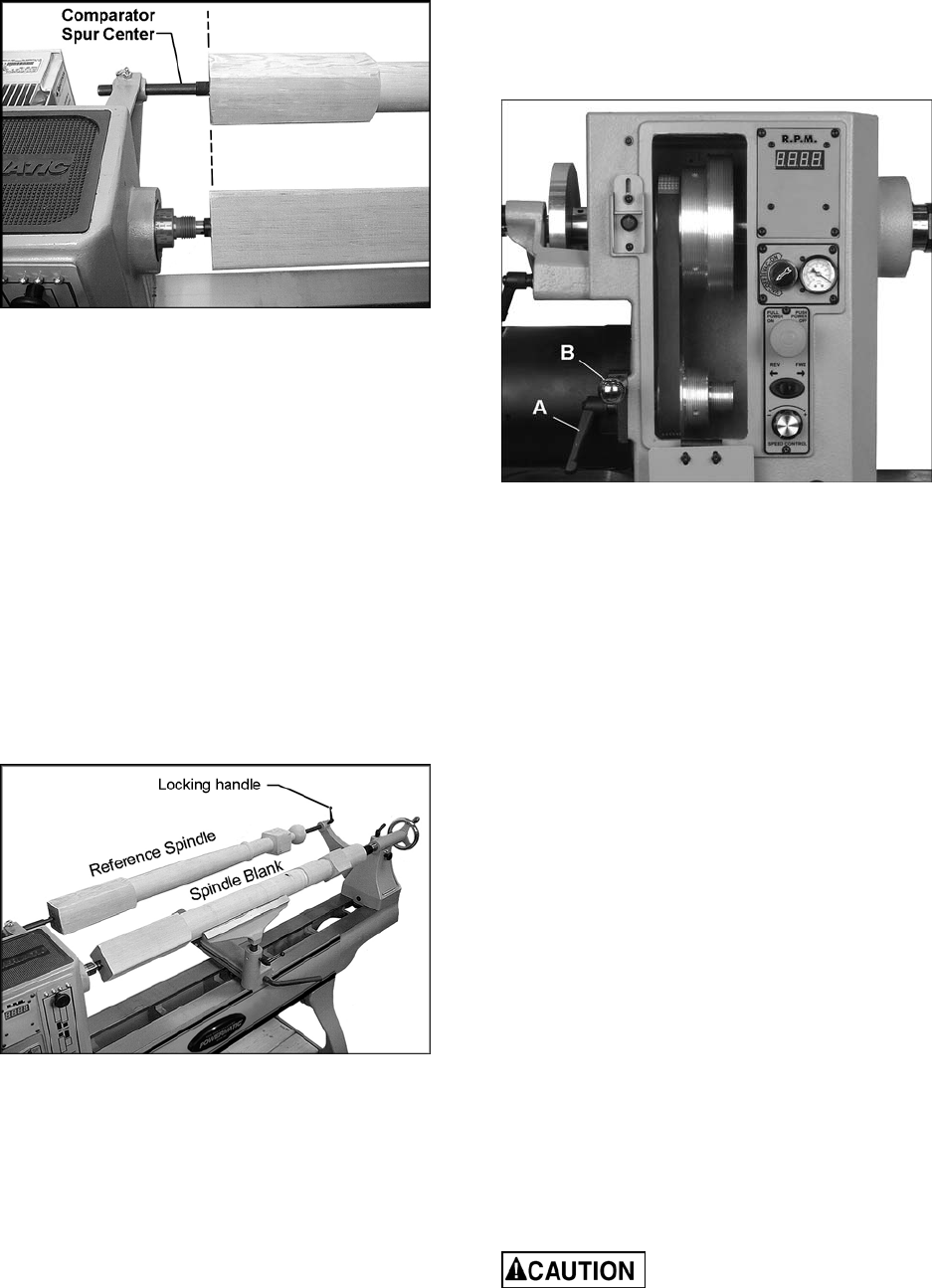
20
Figure 29
3. Install comparator dead center in the
comparator bracket and tighten lock handle.
See Figure 30.
4. Mount spur center with the spindle blank that
you will be turning. Loosen tailstock locking
handle, and slide tailstock until live center is
about 1-inch from spindle blank, then tighten
locking handle. Advance live center using
tailstock handwheel, until live center is secured
in spindle blank.
5. Mount reference spindle between comparator
centers, as shown in Figure 30.
NOTE: Reference spindle should be mounted
last after all adjustment of tailstock and quill
has been accomplished with spindle blank.
Likewise, when turning operation is complete,
remove reference spindle first.
Figure 30
(shown with optional bed extension)
9.12 Speed change
1. Disconnect lathe from power source.
2. Open belt access door.
3. Loosen lock handle (A, Figure 31) and lift up
handle (B) to raise motor. Tighten lock handle
(A) to hold motor in raised position.
4. There should be sufficient slack in the belt to
reposition it to the other steps on the sheaves.
The label on the access door shows the
required belt position.
Figure 31
Belt shown in High speed range position
5. Loosen lock handle (A) and lower motor to
tension belt. Be sure that the Poly-V grooves
of the belt seat properly in corresponding
groove of sheave. Do not overtension; a very
light pressure on the tension handle (B) is
adequate to prevent belt slippage.
6. Tighten lock handle (A).
9.13 Checking spindle play
The spindle bearing has been set at the factory for
general turning applications. There should be no
"end play" or looseness along the spindle’s axis. If
any looseness should ever occur, it may be
rectified by carefully tightening the bearing lock nut
on the spindle, as follows. (See Figure 32).
1. Loosen set screws and remove handwheel
from headstock.
2. Use a screwdriver to carefully bend back any
tabs on the tabbed lock washer (C, Figure 32)
that interfere with the insets on the bearing
lock nut (D).
3. Place the end of a flat head screwdriver down
against one of the insets of the bearing lock
nut (D).
4. Tap the handle of the screwdriver with a mallet
so that it turns the bearing lock nut (D) tighter
in a clockwise direction. Rotate the bearing
lock nut only about 1/16” at a time.
Do not over-tighten the
bearing lock nut or the spindle bearings will
overheat.



